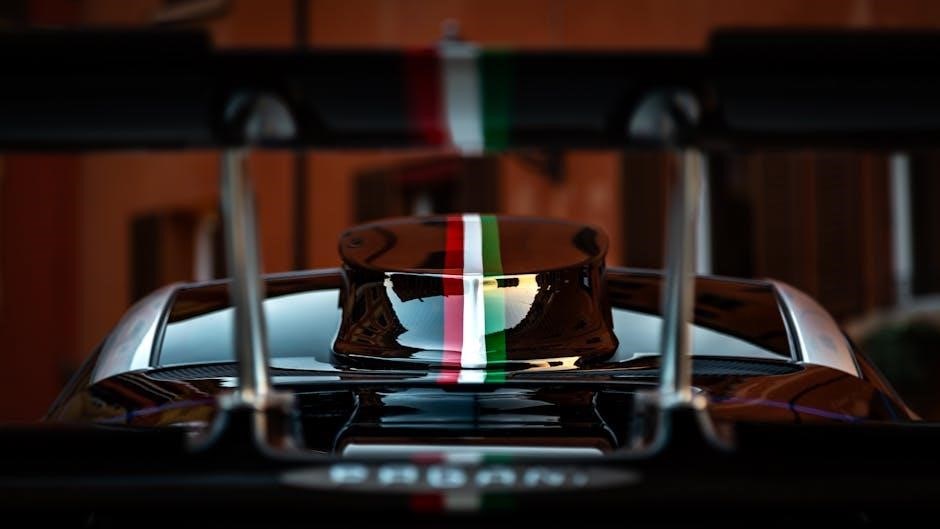car decal instructions
Car decals are versatile vinyl stickers designed to personalize vehicles‚ offering a durable way to enhance aesthetics. They come in various designs‚ from simple logos to intricate graphics‚ and are easy to apply on clean‚ smooth surfaces. Decals express individuality‚ making them a popular choice for car enthusiasts seeking unique style without permanent changes.
1.1 What Are Car Decals
Car decals are adhesive vinyl stickers designed to be applied to vehicles for decorative or informational purposes. They are made from durable materials that withstand outdoor conditions‚ ensuring long-lasting results. Decals can feature various designs‚ from simple text to complex graphics‚ and are often used for personalization‚ branding‚ or promotional messaging. Unlike paint‚ decals are removable and do not damage the car’s surface when applied or removed correctly. They are a popular choice for vehicle customization due to their versatility‚ ease of application‚ and ability to enhance a car’s aesthetic appeal without permanent changes.
Preparing the Car Surface
Ensure the car surface is clean and dry. Use mild soap and water to remove dirt‚ oil‚ or contaminants. Avoid harsh chemicals that may damage the finish or affect decal adhesion.
2.1 Cleaning the Surface
Cleaning the car surface is crucial for proper decal adhesion. Use a mild cleaner or soap solution to remove dirt‚ oil‚ or contaminants. Avoid harsh chemicals that may damage the paint or interfere with the decal’s adhesive. Rinse thoroughly with clean water and let the surface dry completely. For optimal results‚ use a microfiber cloth to wipe away any remaining moisture or residue. A clean‚ dry surface ensures the decal adheres evenly and lasts longer. This step is essential for a smooth and successful application process.
The Application Process
Apply the decal by aligning it with the car surface‚ starting from one corner and smoothing it out with a squeegee or credit card to remove air bubbles. Ensure proper alignment and use a mild soap solution for larger decals to prevent sticking issues. Work methodically to achieve a professional finish.
3.1 Wet vs Dry Application Methods
Wet application involves using a soapy water solution to slide the decal into place‚ making it easier to adjust and preventing air bubbles. This method is ideal for large decals. Dry application is simpler‚ with the decal applied directly to the clean surface. It’s best for small to medium decals. Both methods require a squeegee or credit card to press out air bubbles. Wet application offers more flexibility‚ while dry is quicker and avoids moisture. Choose based on decal size and desired ease of alignment for a smooth‚ professional finish.

Tips for Longevity
To ensure car decals last‚ avoid harsh chemicals and regular cleaning. Use mild soap and water‚ and avoid high-pressure washes. This helps maintain their vibrant appearance.
4.1 Avoiding Harsh Chemicals
Harsh chemicals can damage car decals‚ causing them to fade or peel. Avoid using strong detergents‚ abrasive cleaners‚ or bleach‚ as they degrade vinyl and adhesives. Instead‚ clean with mild soap and water. Regular exposure to fuel‚ oil‚ or acidic substances can also harm decals. Avoid high-pressure washes‚ which can weaken adhesion. For tough stains‚ gently scrub with a soft cloth and mild soap. Rinse thoroughly to remove residue. Avoiding harsh chemicals ensures decals remain vibrant and intact‚ preserving their appearance and longevity on your vehicle.

Common Mistakes
Common mistakes include improper alignment‚ insufficient cleaning‚ and rushing the application. These errors can lead to air bubbles‚ uneven adhesion‚ or peeling‚ compromising the decal’s appearance and longevity;
5.1 Improper Alignment
Improper alignment is a common mistake that can ruin the appearance of your car decal. When the decal is not centered or evenly spaced‚ it can look unprofessional and detract from the vehicle’s aesthetic. This often happens when rushing the application or failing to use a reference point. To avoid misalignment‚ take your time and ensure the decal is level before pressing it onto the surface. Use a squeegee or credit card to smooth it out gradually‚ starting from the center and working outward. Proper alignment ensures a clean‚ professional finish and prevents air bubbles or uneven edges.

Tools Needed
Essential tools for applying car decals include a squeegee‚ credit card‚ cutting tool‚ and spray bottle with soapy water for a smooth application. Ensuring a professional finish and preventing air bubbles.
6.1 Essential Items
For a seamless car decal application‚ essential tools include a squeegee or credit card to smooth out air bubbles‚ a spray bottle with soapy water‚ and a microfiber towel for drying. A sharp utility knife or cutting tool is useful for trimming excess vinyl‚ while masking tape can help align the decal accurately. Additionally‚ a ruler or straight edge ensures precise placement‚ and transfer tape is crucial for transferring the decal from its backing to the car. Having these items ready ensures a professional finish and prevents common issues like air bubbles or misalignment.
Surface Types
Car decals adhere best to smooth‚ clean surfaces like glass‚ metal‚ and painted plastic. Avoid rough or textured areas for optimal adhesion and a professional finish.
7.1 Suitable Materials
Car decals are best applied to smooth‚ non-porous surfaces like glass‚ metal‚ or painted plastic. These materials ensure proper adhesion and prevent air bubbles or peeling. Clean‚ dry surfaces are essential for longevity. Avoid applying decals to rough‚ textured‚ or uneven areas‚ as this can compromise durability. Additionally‚ decals should not be placed on surfaces exposed to extreme heat or harsh weather conditions. Always test a small area first to ensure compatibility and proper bonding. This ensures your decal looks great and lasts for years‚ enhancing your vehicle’s appearance effectively.

Care and Maintenance
Regularly wash your car with mild soap to keep decals clean. Avoid harsh chemicals or abrasive cleaners that can damage the vinyl. For tough spots‚ use a soft cloth and gentle pressure to prevent peeling or fading. Direct sunlight and extreme temperatures can affect durability‚ so park in shaded areas when possible. Proper care ensures your decals remain vibrant and intact for years‚ maintaining your vehicle’s personalized style effectively and effortlessly.
8.1 Regular Cleaning
Regular cleaning is essential to maintain the appearance and longevity of car decals. Use mild soap and water with a soft sponge or cloth to gently wipe away dirt and grime. Avoid using harsh chemicals‚ abrasive cleaners‚ or high-pressure washes‚ as these can damage the vinyl or cause fading. For tougher spots‚ lightly scrub with a damp cloth‚ but avoid scrubbing too hard. Rinse thoroughly and dry with a microfiber towel to prevent water spots. Regular cleaning prevents dirt buildup and ensures your decals remain vibrant and intact for years.

Legal Considerations
Ensure car decals comply with local laws and regulations. Some areas require permits for specific decals‚ while others restrict certain designs or content. Check legal requirements before application.
9.1 Permits and Regulations
Applying car decals may require permits‚ especially for commercial vehicles or large graphics. Some jurisdictions regulate decal content‚ size‚ and placement. Ensure compliance with local laws to avoid fines. For instance‚ reflective decals often need official approval. Chauffeur-driven vehicles may require specific decals‚ while others might need permits for visibility or advertising purposes. Always check regional regulations before applying decals‚ as violations can lead to penalties. Proper documentation and adherence to guidelines ensure legal use of car decals.
Car decals offer a simple yet effective way to personalize your vehicle. Proper preparation‚ application‚ and care ensure longevity. Follow guidelines for a professional finish and lasting style.
10.1 Final Tips
To ensure your car decals look their best‚ always clean the surface thoroughly before application. Use a squeegee to smooth out air bubbles and avoid direct sunlight during installation. For large decals‚ apply a soapy water solution to prevent air pockets. Allow the decal to set for 24 hours before washing the car. Regularly clean the decal with mild soap and water to maintain its appearance. Avoid using harsh chemicals or abrasive materials‚ as they can damage the vinyl. By following these tips‚ your car decals will remain vibrant and intact for years to come.